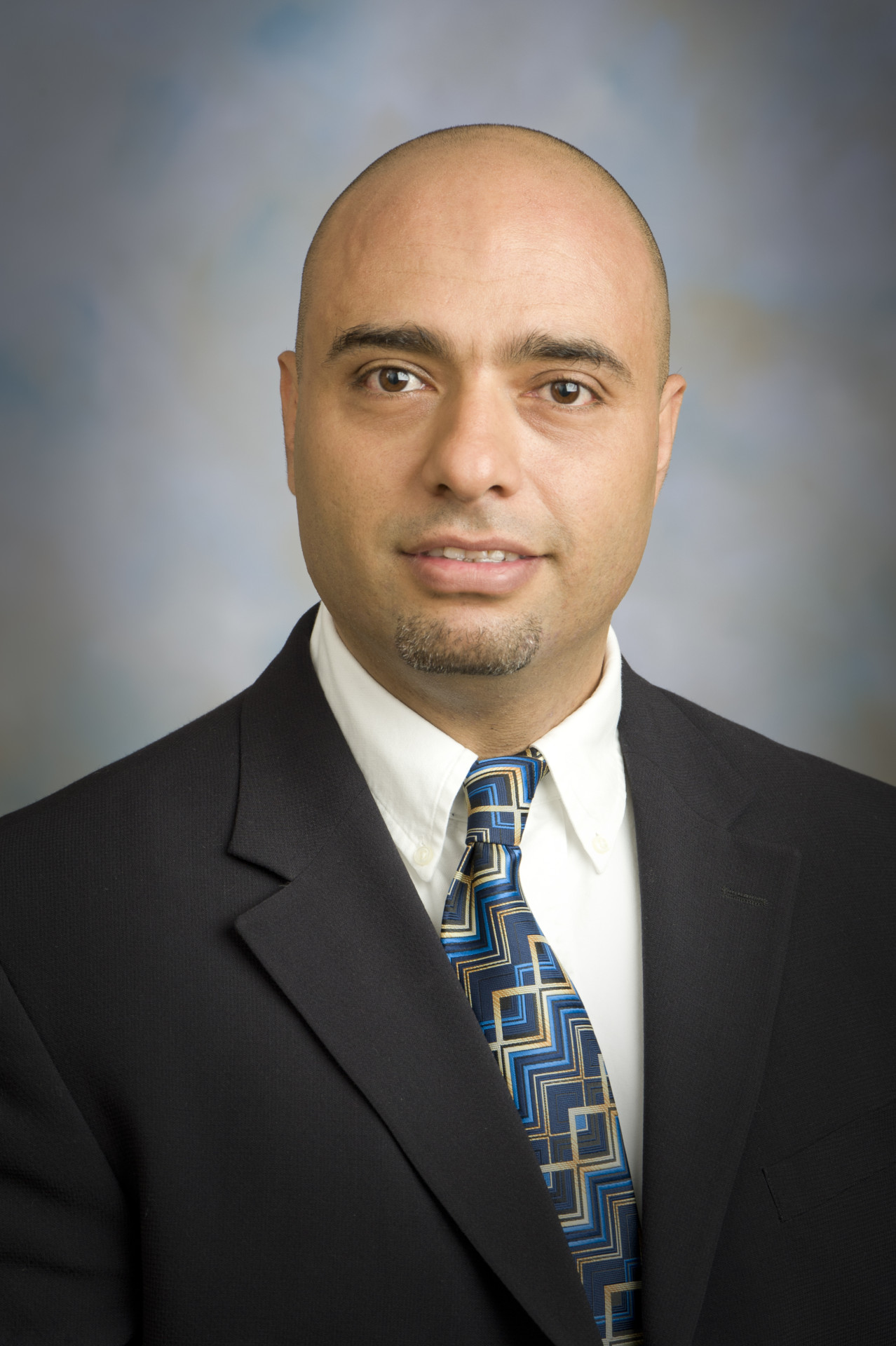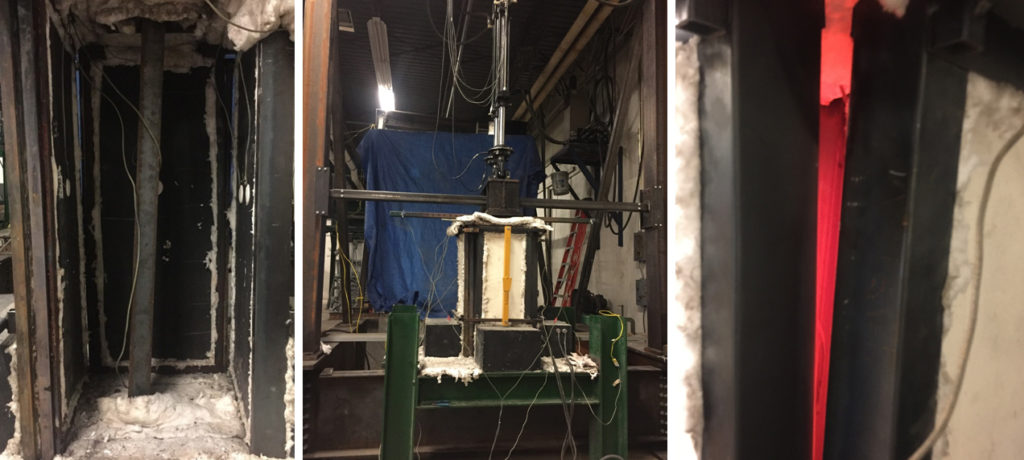When National Academy of Engineering member Bruce Ellingwood nominated civil engineering associate professor Hussam Mahmoud to attend the Academy’s U.S. Frontiers of Engineering Symposium in 2015, Ellingwood told him it was a long shot. Out of 700-800 nominees, only 80 were invited to the event.

“He told me this is a very low probability, high consequences event – he works in the area of risk analysis and that’s how he communicated it,” Mahmoud said, with a smile. “He had selectively nominated people in the past and they were not chosen.”
He not only attended the prestigious symposium that year, he has since received numerous fellowships and invitations from the National Academies of Sciences, Engineering, and Medicine. That included the summit on National Academy of Engineering Grand Challenges in London just last month, one of only 20 invitees out of more than 3,000 Frontiers of Engineering alumni.
In November, he will represent the United States as co-chair of the 2019 Arab-American Frontiers Symposium, in collaboration with the Library of Alexandria in Egypt.
Bringing together outstanding researchers
The symposium presents an opportunity for researchers in Arab countries and the U.S. to learn from one another, bringing together scientists, engineers, and medical professionals to innovate across disciplines.
Mahmoud reviewed session proposals with his Egyptian counterpart and committee co-chair, Sameh Soror, Foreign Secretary of the Egyptian Academy of Scientific Research and Technology and faculty at Helwan University, and with Dalal Najib, Director of Science and Engineering Capacity Building in the Policy and Global Affairs Division at the U.S. National Academies.
All rising stars in their fields, presenters were chosen based on their academic excellence and how they fit with the symposium’s overall topics. Those topics — sensing technologies, artificial intelligence, water management, infectious disease, and community resilience — are critical concerns for Arab countries and the U.S. alike.
In his own work on community resiliency, Mahmoud found that variables differ between U.S. and Arab countries in the models he builds. Questions rise about how those unique variables work in advanced data-supported models, and if the models are scalable in other regions.
“When you start to look at the social and economic fabric of communities in the Middle East, you can start answering questions about your own model,” said Mahmoud. “The symposium promotes collaboration and allows us to understand what we’re doing here in the U.S. in better ways.”
Elevating models from single structures to entire communities
Engineers often study individual sections of infrastructure to determine their safety in a disaster. A different type of battery may last longer when the power is out, or a particular type of bridge might do better than another in an earthquake.

Mahmoud’s research broadened after interactions with other researchers at symposiums. He learned to elevate infrastructure research from examining individual structures to modeling community-wide systems.
“When you look at community resilience, the fundamental analysis that you need at the very beginning is understanding infrastructure damage and recovery,” said Mahmoud. “Then you can start to look at how the society, economy, and infrastructure work as a system.”
Modeling disaster recovery at a community level
Mahmoud uses field studies and advanced experimental, numerical, and analytical models to investigate disaster scenarios at a community-wide level. He has found that preserving one particular structure or path could make the difference between saving a community or losing it entirely.
A fire in one house on the outside of town may not affect anyone else, just as a disease might not spread from an isolated person. But if that house is surrounded by three others, and those three are themselves surrounded by three more, the problem spreads dramatically.
By starting in the right spot, just like a disease epidemic, what began as a minor fire threatens to destroy the entire community.
Interconnected structural, social, and economic impacts
Mahmoud’s simulations can show which structures are the most crucial to save the entire community, but the models become more complex with social and economic concerns. He said there is not always an easy answer.
On one side, saving certain houses saves the entire community, and the community should support those homeowners over others in the neighborhood. The community might be tasked with paying for fire-proof paint, or keeping those yards clean of trash.
On the other side, individual homeowners take care of their own properties to keep the community safe, and put in more effort than those not on the critical path.
“These models are now giving us a lot of new information,” said Mahmoud. “They are also bringing a lot of new social issues that have to be addressed.”
A fellowship and collaboration in Algeria
The complexity of the challenges faced in Mahmoud’s models in the U.S. are mirrored in Arab communities, and learning from each other is beneficial in addressing those challenges.
Along with being a co-chair for the symposium, the National Academies provided him with a fellowship connecting him with a scientist in the Middle East — Rafik Taleb from University of Blida 1 — to collaborate. He will travel in November to Algeria to research the seismic resilience of schools and hospitals in that country.
Mahmoud’s team previously developed models to determine how hospitals and schools in the U.S. function after a disaster. The fellowship gives him the opportunity to find out if the same models are scalable to other countries. If the models are not applicable to Algeria’s system, the collaboration can determine where the model is not versatile enough or what might hinder its use.
The models will then be revised, enhancing them to address additional relevant economic and societal issues in the U.S. and in developing countries. In particular, the models can address infrastructure and system-wide issues affecting the most susceptible people, something Mahmoud said he finds both important and exciting.
“At this part of my career I want to give back, to support the vulnerable population,” said Mahmoud. “I want to understand why they are vulnerable and to do something to help them.”